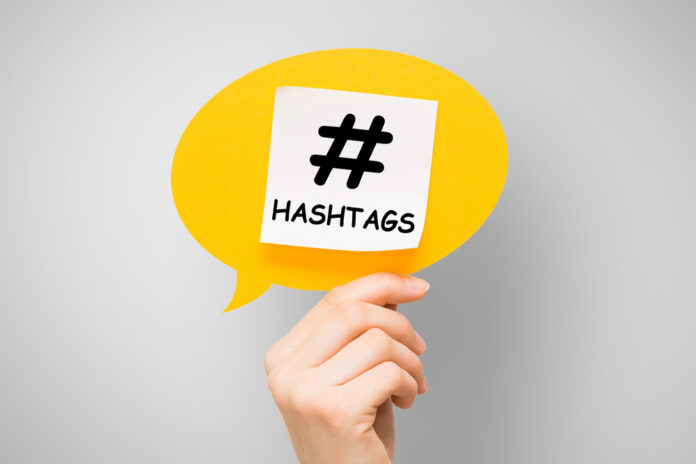Table of Contents
- Introduction
- Why Hashtags Still Matter
- Features of Effective Hashtags
- Choosing the Right Hashtags for Growth
- Tools That Support Hashtag Research
- Success Stories in Action
- Common Mistakes to Avoid
- Measuring Hashtag Performance
- The Future of Hashtags in Business Growth
- Conclusion
Introduction
Digital marketing grows more competitive each year, with platforms continually reshaping how content is prioritized and delivered. Amid these changes, one element has proven its staying power: the hashtag. Far from being a fleeting trend, hashtags play a central role in discovery, visibility, and engagement. They connect brands with audiences, spark community conversations, and amplify campaigns, making them an essential part of growth strategies for businesses seeking sustainable digital impact.
As Nerieda Keenan at Born Social explains, “despite algorithm changes, hashtags are still an essential part of growth strategies for businesses and creators alike.” This insight underscores their evolving role—not just as labels, but as strategic connectors shaping how businesses grow in a digital-first world.
Why Hashtags Still Matter
Instagram, TikTok, and X algorithms prioritize personalized feeds and interest-driven content, transforming hashtags into relevance, context, and intent markers. These markers ensure content surfaces where it matters most, extending reach beyond existing followers. For businesses, hashtags can place a brand in front of niche audiences seeking products, services, or conversations. Whether a small café uses #LocalEats or a global company promotes sustainable practices, hashtags remain a cost-effective gateway to visibility.
Features of Effective Hashtags
Not all hashtags drive equal value. Effectiveness comes from a blend of strategy and authenticity. The most successful hashtags share key traits:
-
Clarity:
Easy to understand and free from confusion.
-
Relevance:
Directly connected to brand identity and audience interests.
-
Popularity:
Trending enough to generate visibility, but not so oversaturated that posts disappear instantly.
-
Brevity:
Short, memorable, and less prone to errors.
-
Uniqueness:
Custom tags that foster recognition and community building.
Businesses that balance popular hashtags with niche or branded ones often see the strongest engagement, as this approach maximizes reach while strengthening connections.
Choosing the Right Hashtags for Growth
Brands should focus on their target audiences’ spending habits and conversations rather than copying competitors’ hashtags. Utilizing tools like Google Trends and TikTok’s Creative Center can help identify hashtags for gaining. Mixing broad and niche hashtags is crucial, as broad tags increase visibility while niche ones connect with highly engaged communities. Regular testing and refining of hashtag strategies ensures content remains relevant in the fast-paced digital landscape.
Tools That Support Hashtag Research
Hashtag discovery and analysis have become more sophisticated, and businesses now rely on specialized tools to guide their strategies:
-
Hashtagify:
Tracks popularity and related tags in real time.
-
RiteTag:
Generates instant hashtag suggestions tailored to specific content.
-
Google Trends:
Highlights broader conversations that hashtags can tap into.
-
Native Analytics Dashboards:
Provide direct insights into hashtag performance across campaigns.
Using these tools helps brands avoid guesswork and align hashtags with audience interests and measurable outcomes.
Success Stories in Action
The impact of hashtags is evident in real-world examples, such as Coca-Cola’s #ShareACoke campaign and a boutique bakery in New York that increased online orders by combining trending food hashtags with location-based ones. These examples demonstrate that hashtag strategies can be effective for businesses of all sizes, as long as they are chosen carefully.
Common Mistakes to Avoid
Despite their benefits, misuse of hashtags can weaken campaigns. Common pitfalls include:
- Overloading posts with too many hashtags makes the content look cluttered.
- Using irrelevant hashtags that confuse audiences and undermine brand credibility.
- Ignoring analytics and missing opportunities to learn what truly works.
- Relying on the same set of hashtags repeatedly leads to audience fatigue.
Avoiding these mistakes allows brands to maintain professionalism and strengthen long-term engagement.
Measuring Hashtag Performance
Data-driven strategies remain the foundation of effective marketing. Businesses must evaluate hashtags for reach, impressions, conversions, follower growth, and engagement quality. Social media dashboards and third-party tools make it easier to track these metrics in real time.
This data informs which hashtags drive meaningful interactions and which should be phased out, ensuring campaigns evolve alongside consumer behavior.
The Future of Hashtags in Business Growth
Looking forward, hashtags are expected to integrate more deeply with AI-driven personalization. Platforms are experimenting with voice-based search and visual recognition, but hashtags continue to anchor discovery. Branded hashtag challenges, especially on TikTok, are set to grow as interactive tools for engaging audiences.
Cultural trends also influence which hashtags thrive. Businesses that stay attuned to social shifts and adapt quickly will maintain an edge. While formats and algorithms evolve, hashtags remain a flexible, proven way to connect audiences with content.
Conclusion
Hashtags will remain crucial in digital marketing, enabling brands to connect with engaged audiences and adapt to algorithm changes. When used thoughtfully, they support sustainable growth. Businesses should embrace hashtags as long-term tools for visibility, engagement, and development in the future.
Find a Home-Based Business to Start-Up >>> Hundreds of Business Listings.
















































